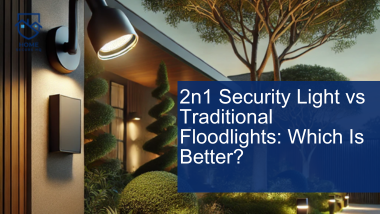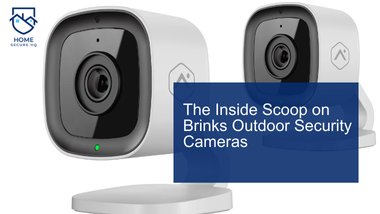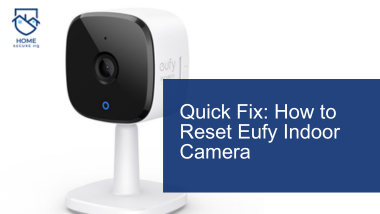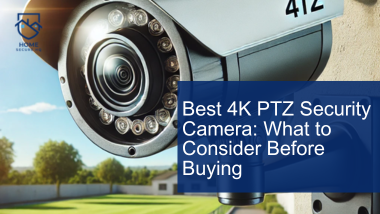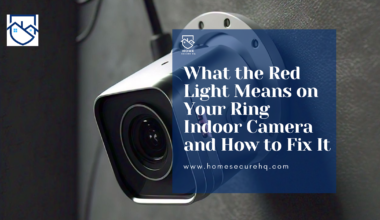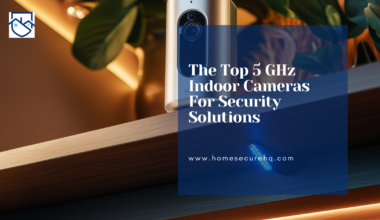You may have heard about the 2n1 security light, a modern solution that combines motion detection and powerful lighting in one device. But how does it compare to the traditional floodlights many of us are used to?
Are you better off sticking with tried-and-tested floodlights, or does the 2n1 security light offer a genuine upgrade?
If you’re a homeowner or tech enthusiast, knowing the differences between these two security solutions will empower you to make the right choice for your safety.
Security Lighting: A Necessary Measure
Before going into the comparison, it’s crucial to understand why security lighting is so important in the first place.
Statistics from the FBI show that properties with good outdoor lighting are 20% less likely to be broken into. Lighting not only acts as a deterrent, but it also improves visibility, allowing homeowners to better monitor their surroundings.
However, not all lighting systems are created equal. Traditional floodlights have long been the go-to solution, providing broad and powerful illumination.
But with the advent of newer, smarter technologies like the 2n1 security light, homeowners now have more sophisticated options to choose from.
Traditional Floodlights: A Staple, But Are They Still Enough?
Let’s begin with the traditional floodlight, a product that has been widely used for decades. Traditional floodlights, as their name suggests, “flood” a large area with bright light, making them an obvious choice for illuminating driveways, backyards, or large spaces.
But while their brightness is a plus, traditional floodlights are limited in functionality. They often remain on throughout the night or until you manually switch them off.
This leads to higher energy consumption, which not only impacts your electric bill but also your environmental footprint. More importantly, they lack the intelligent features that newer systems, such as the 2n1 security light, offer.
Did you know? the U.S. Department of Energy, outdoor lighting accounts for up to 25% of a home’s energy bill, with traditional floodlights contributing a large portion of that figure due to their continuous use.
2n1 Security Light: A Smarter, More Efficient Solution
Now, let’s talk about the 2n1 security light, a relatively new entry in the world of home security. The major difference? The 2n1 light doesn’t just illuminate it reacts. Equipped with motion sensors, this lighting system activates only when movement is detected.
This means it conserves energy while still providing powerful illumination when it matters most.
Moreover, the 2n1 security light often comes with additional features such as cameras, two-way audio, and remote monitoring.
These features transform a simple light into a multi-functional security tool, making it far more efficient than a traditional floodlight.
When motion is detected, you get a bright light to scare off intruders and receive alerts on your smartphone or capture footage for later review.
2n1 Security Light vs Traditional Floodlights
This blog post will compare the two comprehensively, to help you decide which option best meets your needs.
- Comparative Brightness
- Energy Efficiency
- Motion Detection
- Surveillance Integration
- Cost Considerations
- Installation and Maintenance
- Durability
Comparative Brightness: Does One Outshine the Other?
One of the key factors to consider when choosing outdoor lighting is the brightness level. Traditional floodlights are known for their brightness, often emitting 1,500 to 2,000 lumens, which can effectively light up large areas.
This makes them ideal for wide spaces such as backyards or parking lots where you need a powerful light to cover a broad zone.
On the other hand, the 2n1 security light is no slouch when it comes to brightness. Most models emit comparable lumens, often ranging between 1,500 and 2,500 lumens, depending on the model.
The advantage of the 2n1 system, however, lies in its combination of brightness and precision. Because it only activates when motion is detected, you get the benefit of bright light only when it’s needed, rather than wasting energy illuminating an empty yard.
The International Dark-Sky Association reports that about 30% of outdoor lighting in the U.S. is wasted, much of it from traditional floodlights that are left on all night long. The 2n1 security light, by contrast, is designed to minimize this waste by lighting up only when necessary.
Energy Efficiency: Which Light Saves You More?
Traditional floodlights have long been criticized for their high energy consumption. These lights are often left on for extended periods sometimes all night which can lead to significant energy waste.
Even LED floodlights, which are more efficient than their halogen counterparts, still consume more energy compared to systems with motion sensors.
The 2n1 security light, in contrast, is designed with energy efficiency in mind. Because it only activates when movement is detected, it uses significantly less energy over time.
Some models even come with solar panels, making them completely energy-independent, further reducing costs and their environmental impact.
Moreover, the fact that these lights turn off automatically when not in use means you don’t have to worry about forgetting to switch them off, saving both energy and money in the long run.
Motion Detection: A Major Advantage for the 2n1 Security Light
One of the standout features of the 2n1 security light is its built-in motion detection. Traditional floodlights offer no such feature they either stay on or off, providing no additional security functionality.
In contrast, the 2n1 light uses advanced sensors to detect movement within a certain range (usually 30 to 70 feet), triggering the light to turn on only when it senses someone or something moving nearby.
Motion-activated lighting not only conserves energy but also acts as a deterrent to intruders. The sudden flash of light is often enough to scare off would-be burglars, alerting you to their presence without them realizing it.
Plus, many 2n1 lights come with the option to adjust the sensitivity of the sensors, ensuring that small animals like squirrels or birds don’t trigger the system.
According to a report by the U.K.’s Office for National Statistics, homes with motion-activated lighting experience 20% fewer break-ins than homes with standard outdoor lighting.
Surveillance Integration: The Future of Home Security
Here’s where the 2n1 security light takes things to a whole new level. While traditional floodlights simply provide illumination, the 2n1 system can integrate additional security features like cameras and real-time video feeds.
This gives you the ability to monitor your property remotely, providing peace of mind whether you’re at home or away. Some models also include two-way audio, allowing you to communicate with someone outside your home through your smartphone.
This feature is particularly useful for alerting intruders that they’ve been seen or for communicating with delivery drivers. Traditional floodlights offer none of these features, making them a much less versatile solution for comprehensive home security.
According to a 2023 report by Statista, the global smart home security market, including products like the 2n1 security light, is projected to grow to $62.4 billion by 2025, as more people seek to integrate smarter solutions into their home security systems.
Cost Considerations: Upfront vs. Long-Term Investment
When it comes to cost, traditional floodlights are typically more affordable upfront. Basic models can start as low as $20 to $40, whereas 2n1 security lights generally cost more, with prices ranging from $60 to $150 or higher depending on the brand and features.
However, it’s important to consider the long-term savings that come with the 2n1 light. Because it uses less energy, you’ll save money on your electricity bill over time. And, if you opt for a solar-powered model, those savings could be even more significant.
Additionally, the motion detection and potential surveillance capabilities of the 2n1 system offer better security overall, which can make the higher initial investment worthwhile.
Installation and Maintenance: Ease of Use Matters
One factor that often gets overlooked is the ease of installation and maintenance. Traditional floodlights usually require wiring and can be more challenging to install, especially if you need to become more experienced with electrical work.
While some LED floodlights offer easier plug-and-play solutions, many still require professional installation.
The 2n1 security light, on the other hand, is often designed with user convenience in mind. Many models are wireless or come with simple DIY installation kits. Furthermore, because these lights are often solar-powered or have longer-lasting LED bulbs, they require less maintenance over time.
Durability: Can They Withstand the Elements?
Outdoor lights need to be tough enough to endure the weather. Traditional floodlights are designed for durability, but they tend to wear out more quickly because they stay on for long periods.
The 2n1 security light is designed to handle harsh conditions as well, with many models boasting weatherproof ratings like IP65 or higher, ensuring protection against dust, rain, and even snow.
Because these lights are motion-activated, they aren’t exposed to as much continuous use, which may contribute to a longer lifespan.
Final Verdict
After weighing the pros and cons of both the 2n1 security light and traditional floodlights, it’s clear that each option has its merits. If you’re looking for a simple, low-cost solution to light up large areas, traditional floodlights may still be a reasonable choice.
However, if you’re seeking a more intelligent, energy-efficient, and multi-functional security solution, the 2n1 security light is the better investment.
Ready to upgrade your home’s security

